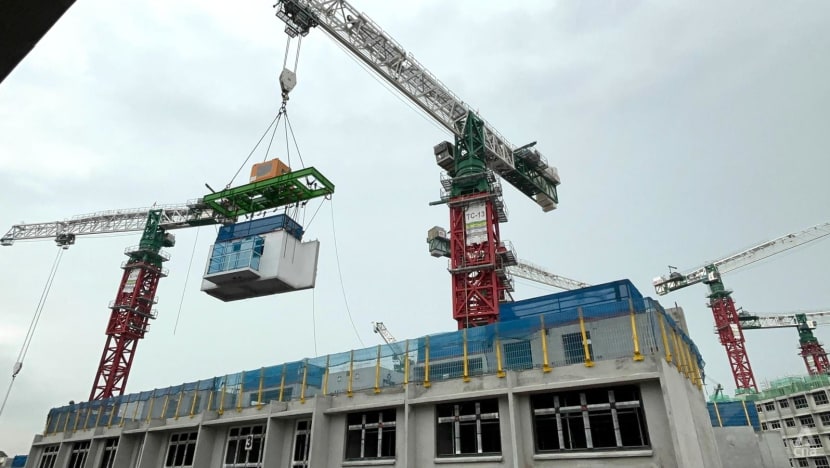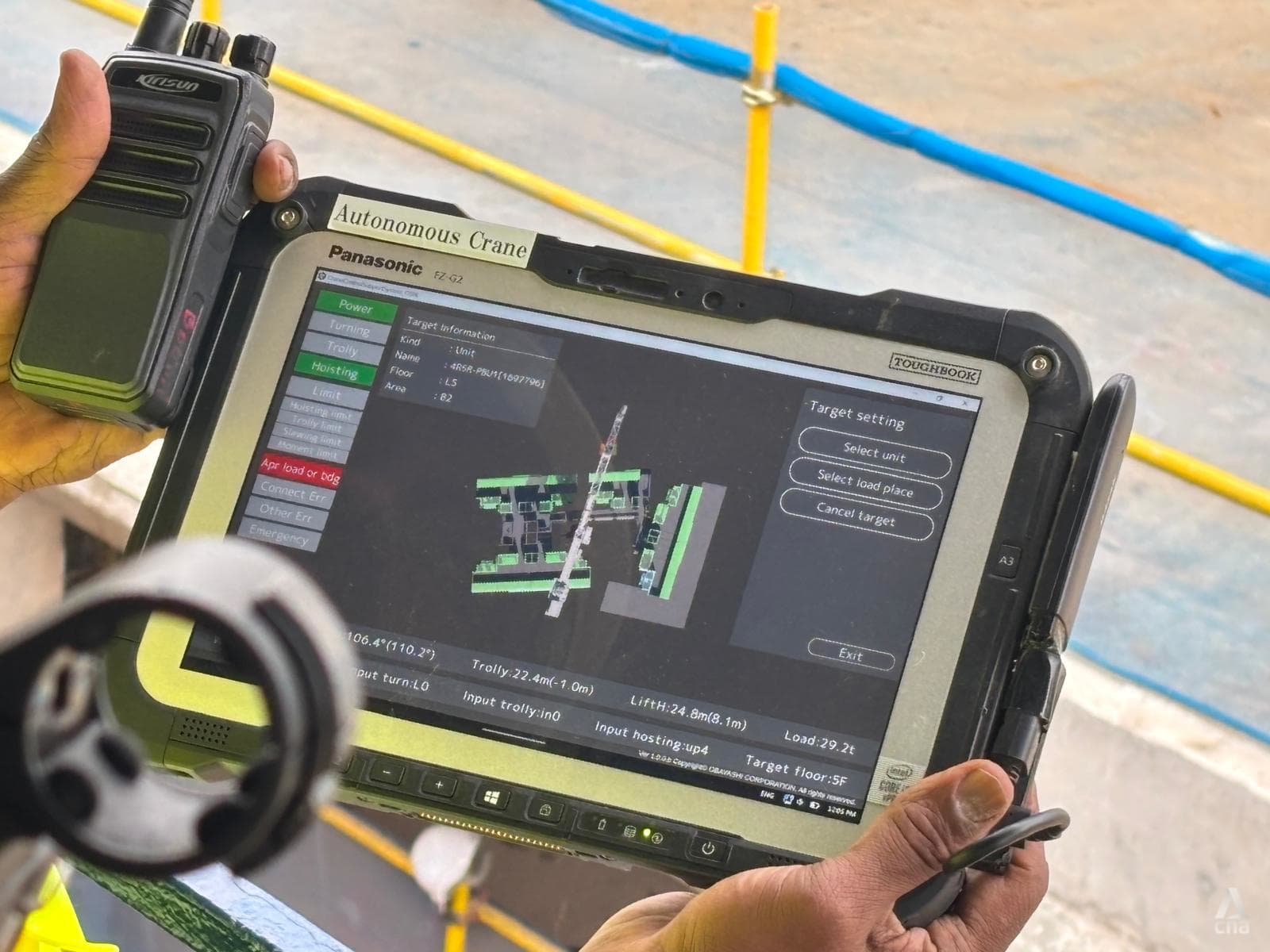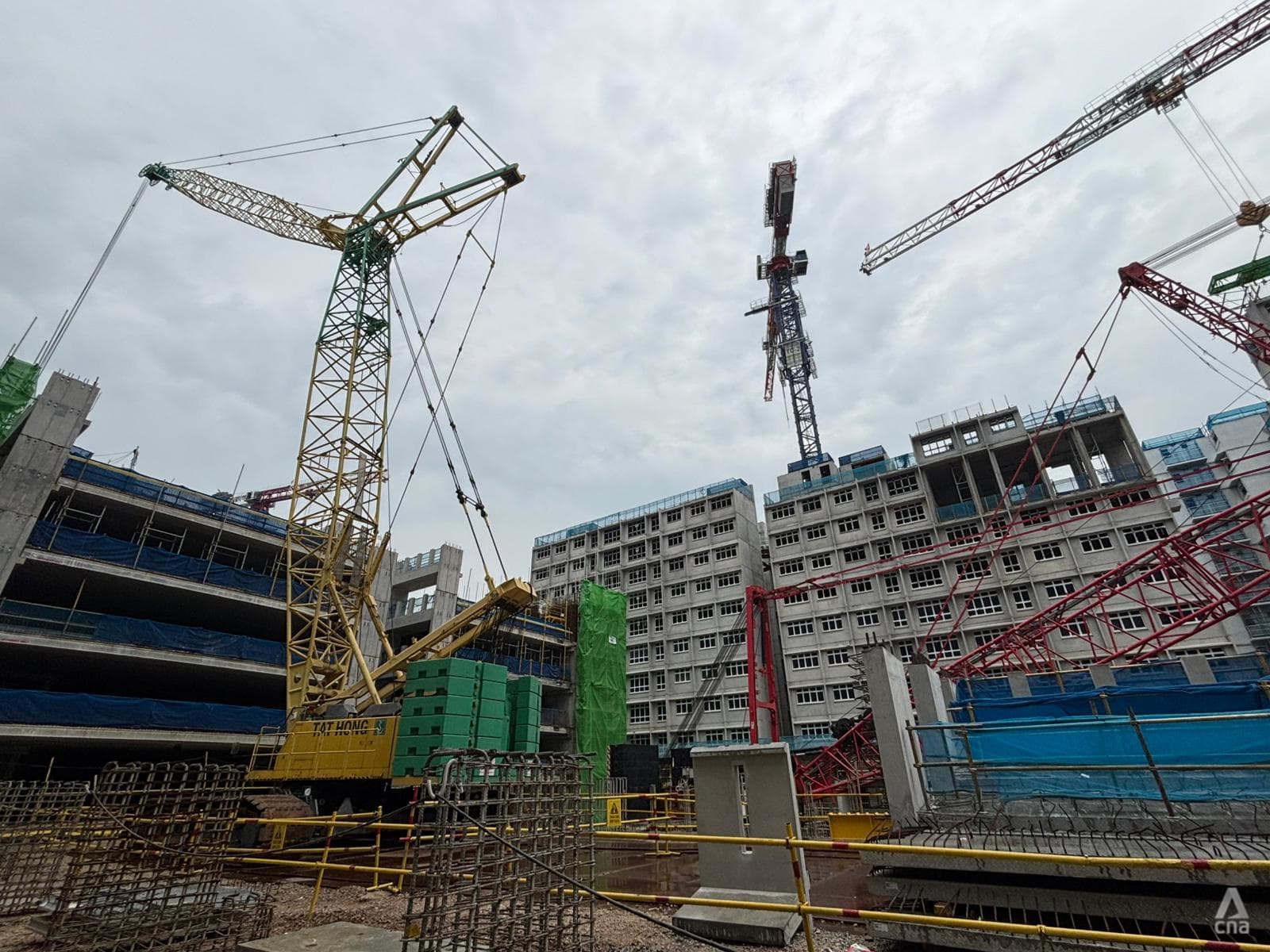About half of new BTO projects to use more robots for painting works from 2025
This is part of the Housing and Development Board’s (HDB) efforts to boost construction efficiency by tapping on automation and robotics.

After months of testing, construction robots with painting and skimming functions will be progressively deployed to more BTO project sites starting from 2025. (Photos: Teambuild, Innovente Asia Pacific)

This audio is generated by an AI tool.
SINGAPORE: More robots carrying out works such as interior painting will be deployed progressively across about half of all new Build-to-Order (BTO) construction sites starting from next year.
This is part of the Housing and Development Board’s (HDB) efforts to boost construction efficiency by tapping on automation and robotics, Senior Minister of State for National Development Tan Kiat How said at an annual forum for building professionals organised by HDB on Wednesday (Oct 23).
Since last year, 10 trials involving construction robots have been carried out at various BTO sites. In a press release on Wednesday, HDB said these trials “have provided insights on the technical efficacy and suitability” of these robotic solutions.
One of the trials involve an "architectural finishing" robot which can automate and speed up labour-intensive tasks such as painting and skimming interior surfaces, with the help of in-built sensors.
Skimming refers to a kind of plastering technique.
The sensors help the robot navigate the site and achieve “precise targeting” for finishing works. Automation also ensures consistency in end-results, HDB said.
A two-year trial for this robot is underway at the Grove Spring @ Yishun BTO site. Since being put to use last August, HDB has observed trade productivity improve by up to 30 per cent - a “positive” outcome that it would like to build on by rolling out these robots to selected BTO sites from next year.
To help contractors who are new to adopting robotic solutions, HDB will partner suppliers to offer the robots at “competitive prices via a term contract”.
“This will enable contractors to access these advanced technologies more affordably, and help contractors to accelerate the process of identifying, onboarding, and deploying suitable robots at our sites,” it added in a press release.
HDB said robotics and automation have helped to further streamline construction processes, optimise resources and reduce reliance on manpower when building new homes.
It is working with industry partners to identify and implement more robotic solutions, such as floor levelling robots and robots that can carry out the remote inspection of completed flats.
Other innovations are also being tested in the design and construction of the Garden Waterfront I & II BTO projects in Tengah, as part of HDB’s Construction Transformation Project.
The project, launched in 2022 as a partnership with construction firm Obayashi Singapore, has been adopting various technologies aimed at raising site productivity by 25 per cent compared to other BTO projects.
For example, artificial intelligence has been used to automate the lifting and transportation of precast components by tower cranes. With this, crane operators now only need to activate one button in their cabin, instead of manually operating the crane for hoisting works.

The tower cranes are also integrated with a device that automates the positioning of precast modules before they are lowered, meaning that workers no longer need to manually adjust and guide the components into place.
The entire installation process from hoisting to final placement is monitored live through a “digital twin” – a digital version of the project – at the site office.
All these measures have helped to speed up the installation of precast components for building new flats, while enhancing work safety, HDB said.

At the same Tengah construction site, machine guidance technology with advanced safety features is also being piloted in mobile cranes used to build a multi-storey carpark.
This comes with a GPS system to define each crane’s specific operational zones, as well as sensors that detect potential obstructions and sound alerts if safe distances from building structures and other equipment are breached.
These features enable two mobile cranes be deployed side by side safely within a confined space, and reduce the manpower needed.

HDB said these technologies being tested at the Tengah site will be studied for “possible wider scale” use in future BTO projects.
In response to CNA’s queries, HDB said the initial costs of deploying any new technologies “are expected to be slightly higher”.
“However, we expect the costs to decrease with wider adoption creating economies of scale. As technology matures and the industry capacities and capabilities build up over time, it would also become more cost-efficient,” an HDB spokesperson said.
“We are also taking a calibrated approach to test and evaluate each type of construction technology, before wide-scale roll-out.”















